
Markets Under Central Bank Command: The Final Week of October 2025
As we enter the final week of October, all eyes turn to the central banks. The Federal Reserve meeting will take center stage, setting the tone for financial markets across the board. However, we should not forget about the ECB, BoC, and BoJ, which are also on the agenda. Meanwhile, members of the “Magnificent Seven” are preparing to release their highly anticipated earnings reports, adding another layer of significance to the week ahead.
U.S. Economy and Federal Reserve Policy Meeting
The U.S. economy continues to demonstrate resilient, well-balanced growth, supported by moderating inflation, solid business momentum, and stable financial conditions. As the Federal Reserve approaches its final policy meeting of the year, the data point to a moderate but sustainable expansion heading into 2026, aligning with expectations for a “soft landing.”
Economic Performance
Economic activity remained steady through late October, with both industrial and consumer-facing sectors showing firm performance. The S&P Global Composite PMI rose to 54.8 from 53.9, reflecting broad business strength. The Services PMI climbed to 55.2, while Manufacturing edged up to 52.2, signaling improving production and new orders. Regional data reinforced this trend — the Kansas City Fed Manufacturing Index advanced to 15, highlighting a notable rebound in Midwest factory output.
Inflation and Monetary Outlook
Inflation continues to cool gradually. The headline CPI rose 3.0% year-over-year, up slightly from 2.9% but below expectations, while core inflation eased to 3.0% from 3.1%. Monthly core prices increased only 0.2%, the slowest pace in three months. Though disinflation progress is evident, the Fed remains cautious as underlying pressures — particularly from tariffs and services — keep price momentum elevated.
The Fed is widely expected to cut rates by 25 basis points at the upcoming meeting, maintaining its measured approach to easing. Further reductions in 2026 will depend on inflation stabilization through mid-year. The ongoing government shutdown may delay the next CPI update until December, leaving limited new data ahead of the FOMC’s year-end deliberations.
Consumer and Housing Trends
Consumer sentiment weakened modestly, with the University of Michigan Index falling to 53.6 from 55.1. One-year inflation expectations held at 4.6%, while five-year expectations rose to 3.9%, reflecting lingering uncertainty. Nevertheless, consumer spending remains firm, supported by low unemployment and steady income gains.
The housing sector is showing early signs of recovery. Existing home sales rose 1.5% in September to 4.06 million units, the highest since February. Lower mortgage rates (down to 6.3% from 6.56%) spurred a 7.7% jump in applications. Median home prices increased 2.3% year-over-year to $420,700, led by the Midwest’s 4.7% rise, though inventories remain 15.6% below pre-pandemic levels.
Financial Conditions and Outlook
The Fed’s balance sheet declined to $6.59 trillion, continuing quantitative tightening, while yields edged lower — the 4-week bill at 3.945%, 8-week at 3.9%, and 5-year TIPS at 1.182%.
Overall, the data confirms a resilient economy with cooling inflation and steady business activity. The Fed is expected to maintain a measured easing path, balancing inflation control with continued economic stability into 2026.
U.S. Economic Outlook
The U.S. economy remains on a stable and resilient trajectory, marked by easing inflation, steady business momentum, and firm energy output. While consumer sentiment has softened slightly, overall labor and industrial indicators continue to align with expectations of a soft landing rather than a sharp slowdown.
With inflation cooling and growth holding firm, financial markets widely expect the Federal Reserve to keep interest rates unchanged in the near term, focusing on balancing price stability with sustained expansion. The overall market tone is neutral to mildly positive: the U.S. dollar remains range-bound, equities have posted modest gains, and bond yields edged lower amid growing confidence in a controlled disinflation path.
Key Economic Drivers This Week
This week is among the most data-heavy and market-sensitive quarters, with three major events shaping sentiment — the Consumer Confidence Index, FOMC policy meeting, and Q3 GDP release.
Consumer Confidence (Tuesday):
The index declined for the third time in four months as assessments of business conditions and job availability weakened. The labor differential — measuring job market strength — fell to its lowest in four years, indicating gradual labor softening. The index is expected to slip slightly to 94 in October, though stock market gains may limit the decline.
Federal Reserve Meeting (October 28–29):
The Fed is expected to cut rates by 25 bps, following its first policy move since 2024. Despite limited new data due to the government shutdown, underlying trends show a modest labor slowdown — ADP employment fell 32K, unemployment edged up to 4.34%, and inflation held steady at 3.0% year-over-year. Chair Jerome Powell may also hint that quantitative tightening could end by December 31, signaling a near-term shift toward liquidity stabilization. Economicians expect the Fed to maintain a measured easing path, with potential additional 25-bps cuts in December 2025, March, and June 2026, followed by a pause around 3.25%–3.50%. Overall, the data reinforces confidence in the Fed’s ability to guide the economy toward a soft landing with inflation steadily converging toward target.
Q3 GDP (Thursday, October 30):
The Atlanta Fed’s GDPNow model projects growth near 4% SAAR, highlighting continued strength in consumption and business investment.
U.S. Dollar and Wall Street Outlook
The U.S. dollar is expected to trade sideways with a slight bullish bias as traders’ position for the Federal Reserve meeting and Q3 GDP release. Markets are fully pricing in a 25-basis-point rate cut, with another possible in December, narrowing global rate differentials. Cooling inflation around 3% supports the Fed’s flexibility to ease, while softening labor data aligns with Chair Powell’s concern about rising employment risks.
The Dollar Index (DXY) remains steady near 98–99, underpinned by accumulation above the 20-day EMA (98.31). Momentum indicators show a neutral-to-bullish tone, with the RSI at 58, suggesting mild upside without overextension. The key technical range remains 96.20–99.80 — a breakout above 99.80 could target 100.90, while a drop below 98.00 risks a pullback toward 96.20.
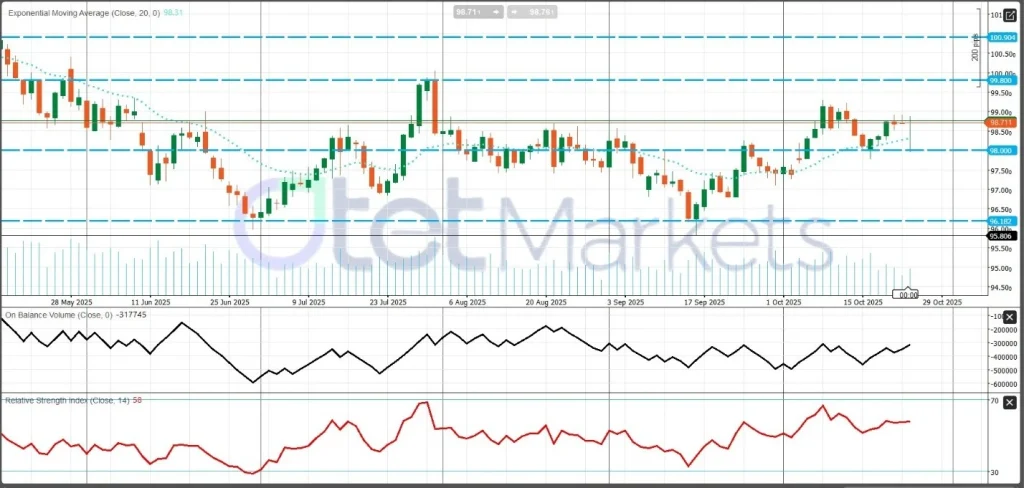
On Wall Street, equities enter the final week of October with strong momentum and confidence in a soft landing. Investors expect the Fed to continue easing policy while maintaining growth. However, any hint of economic overheating or hawkish guidance could trigger profit-taking, particularly in high-duration tech and AI-linked names.
The week’s main catalysts include:
- Fed Press Conference (Wednesday): A dovish tone could lift technology, housing, and small caps, while a cautious message may spark a short-term pullback.
- Mega-Cap Earnings (Wednesday–Thursday): Results from Microsoft (Azure AI) and Apple (iPhone and services margins) will heavily influence sentiment. Strong results would reinforce the “AI-led soft landing” narrative.
- Geopolitical Risk: Renewed U.S.–China tariff tensions or political uncertainty could weigh on equities and risk appetite.
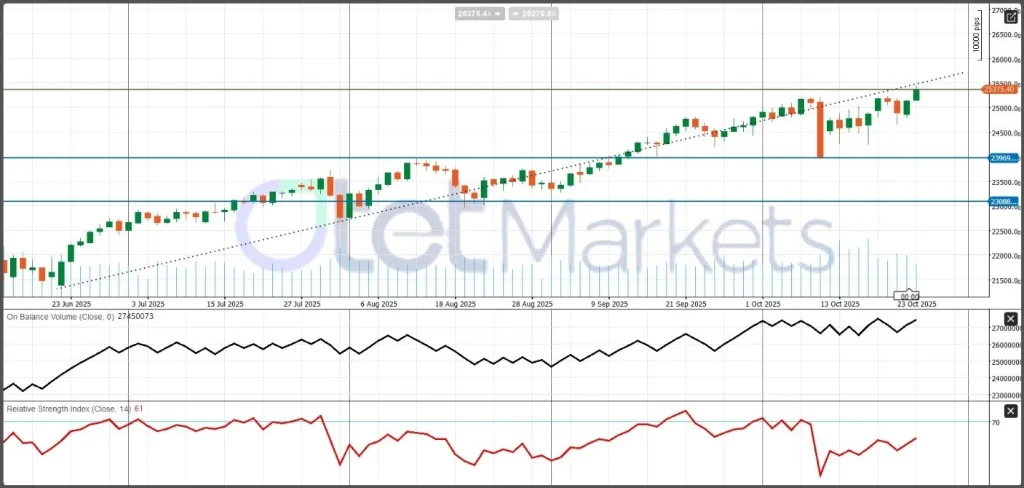
Technically, the Nasdaq remains in a strong bullish channel, with support at 23,970 and resistance at 25,500–26,000. As long as prices hold above 24,000, momentum remains positive, targeting 26,800 if the rally extends.
Overall, market sentiment stays constructively bullish, but volatility risks remain elevated as monetary policy and earnings converge to drive direction.
Eurozone Economic Review & ECB Policy Meeting Preview
The Eurozone economy is showing clearer signs of stabilization and modest recovery, supported by firmer business activity, easing inflation, and gradually improving consumer sentiment. While Germany continues to lead the upturn and France and Spain lag behind, the broader outlook has turned more constructive, suggesting a slow but sustained rebound after a prolonged period of stagnation.
Business Activity and PMIs
The latest HCOB PMI survey confirmed stronger private-sector performance across the bloc. The Eurozone Composite PMI rose to 52.2 in October from 51.2, the fastest expansion since mid-2024.
- Manufacturing PMI: 50.0 — signaling stabilization in industrial output.
- Services PMI: 52.6 — reflecting robust domestic demand and lower input costs.
At the national level, Germany’s Composite PMI climbed to 53.8, indicating firm momentum in both services and manufacturing, while France’s reading remained weak at 46.8, highlighting uneven recovery across regions. Despite this divergence, the overall tone points to renewed growth and business confidence.
Consumer and Price Dynamics
Consumer confidence improved modestly, with the Eurozone index rising to -14.2 and France’s to 90 (from 88), reflecting reduced inflation fears and improved household outlooks.
On the pricing side, Germany’s PPI fell 1.7% YoY, confirming continued disinflation in industrial costs, while Spain’s PPI turned positive at 0.3%, signaling normalization in supply chain pricing.
Although construction activity slipped 0.1% MoM, ongoing current account surpluses and resilient export activity are cushioning growth.
Monetary Landscape and ECB Outlook
Financial conditions remain stable, with the Eurozone current account surplus at €11.9 billion in August, supported by steady capital inflows. The European Central Bank (ECB) continues its data-dependent stance, balancing subdued growth against lingering inflation.
The ECB is widely expected to keep the Deposit Rate at 2.00% during its upcoming meeting. Economic data point to steady but subdued growth — Q2 GDP expanded 0.1% QoQ / 1.5% YoY, and Q3 GDP is expected near 1.2% YoY. Improving PMI readings support a hold, even as inflation remains slightly above target and wage pressures ease.
Policy and Market Implications
The ECB is likely to remain on hold through year-end, with attention turning to updated staff projections and President Lagarde’s guidance for 2026. While the base case remains policy stability, downside risks persist if growth or inflation weaken further.
Market sentiment toward the euro remains mildly positive, supported by disinflation progress and improving business confidence. The region’s macro backdrop now favors gradual recovery and cautious optimism into 2026.
Japan Economic Review & Bank of Japan (BoJ) Policy Preview — October 2025
Japan’s economy continues to show steady but uneven recovery, characterized by firm inflation, resilient services activity, and improving exports, while domestic demand and manufacturing remain subdued. The broader outlook points to gradual stabilization heading into the final months of 2025.
Inflation and Prices
Japan’s National Core CPI held at 2.9% YoY in September, remaining above the BoJ’s 2% target for a 19th consecutive month. Price growth was broad-based across energy, food, and services, with monthly inflation rising 0.1%, signaling persistent but controlled inflationary momentum. This durability strengthens the case for the BoJ to reassess its ultra-loose monetary policy, particularly as wage pressures continue to build modestly.
Business Activity and PMIs
The au Jibun Bank Composite PMI stood at 50.9 in October, indicating modest expansion. Services remained robust at 52.4, while Manufacturing slipped to 48.3, reflecting mild contraction amid weak external demand. This divergence underscores Japan’s post-pandemic shift, where consumption and tourism offset industrial softness.
Trade and External Sector
Exports rose 4.2% YoY in September, led by autos and electronics, while imports increased 3.3%, narrowing the trade deficit to ¥234.6 billion. A weaker yen has supported export competitiveness. Additionally, foreign investors purchased ¥752.6 billion in Japanese equities, reflecting renewed international confidence.
BoJ Policy Outlook
The Bank of Japan is expected to hold rates at 0.50% next week, maintaining caution as inflation remains above target. However, the market anticipates a possible 25 bps hike to 0.75% in December, depending on wage and growth data.
Governor Kazuo Ueda faces a delicate balance — supporting recovery while preparing for gradual policy normalization amid external risks such as U.S.–China tensions and domestic political caution under Prime Minister Sanae Takaichi.
Market Outlook
The overall tone remains mildly positive for the yen (JPY). Sustained inflation, a narrowing trade deficit, and expectations of gradual BoJ tightening underpin steady confidence in Japan’s economic trajectory heading into 2026.
Canada Economic Review & Bank of Canada (BoC) Policy Preview
Canada’s economy continues to navigate a delicate balance between persistent inflation and weakening growth, leaving the Bank of Canada (BoC) with a finely balanced policy decision at its upcoming meeting. While inflation ticked higher in September, overall momentum in growth and demand remains subdued — supporting expectations for one final rate cut before year-end.
Inflation and Prices
Headline CPI rose 2.4% YoY in September, exceeding forecasts of 2.2% and accelerating from 1.9% in August. The BoC’s average core inflation measure climbed to 3.2%, indicating that while inflation pressures linger, they remain well below early-2025 levels. On a monthly basis, prices rose 0.1%, driven mainly by energy and shelter costs. Overall, inflation remains slightly above the BoC’s 2% target but stable enough to allow policy flexibility if growth weakens further.
Growth and Labor Conditions
Canada’s GDP contracted 1.6% (annualized) in Q2, highlighting softer domestic demand and business investment. However, early Q3 indicators show tentative stabilization — retail sales rebounded 1.0% MoM in August, while the Business Outlook Survey reported improving sentiment in select sectors. The labor market showed resilience, adding 60.4K jobs in September, though the unemployment rate held at 7.1%, signaling lingering slack.
BoC Policy Outlook
Markets widely expect the BoC to cut rates by 25 bps to 2.25%, following September’s reduction to 2.50%. Still, the decision remains finely balanced: policymakers may opt to pause temporarily to gauge inflation trends before acting again in December. The BoC will also weigh the Federal Reserve’s stance and global policy dynamics before signaling its next steps.
The Canadian economy remains weak but stable, with easing inflation, modest job recovery, and steady consumer activity. The BoC is likely nearing the end of its easing cycle, aiming to anchor inflation expectations while cushioning domestic slowdown risks.
Market tone: Neutral to mildly supportive for CAD, as a rate cut is already priced in and confirmation of disinflation could strengthen confidence in a soft landing.
Gold Market Condition & Weekly Outlook — October 2025
Gold ended the week trading within a volatile $4,100–$4,150 range, following one of its most dramatic corrections in years. Spot prices briefly surged to a record high above $4,380/oz, before retreating more than 5–6% amid heavy profit-taking and a firmer U.S. dollar.
Despite this pullback, gold remains up nearly 50% year-to-date, underpinned by geopolitical tensions, central bank accumulation, and doubts over policy credibility in major economies. The move represents a blow-off top followed by rapid deleveraging, not a reversal of the long-term uptrend.
Key Drivers of the Week
- Profit-Taking & Positioning:
The surge above $4,300 triggered one of the largest two-day selloffs in years as speculative long positions were unwound, extending to silver and other precious metals. - U.S. Dollar Strength:
The Dollar Index (DXY) remained steady near 98–99, pressuring gold mechanically as traders positioned ahead of the Fed meeting and U.S. GDP release. - Cooling Safe-Haven Demand:
Tentative improvement in U.S.–China trade sentiment and easing geopolitical risks temporarily reduced gold’s “panic premium.” - Monetary Policy Expectations:
Markets expect the Federal Reserve to cut rates by 25 bps this week, possibly followed by another in December. A dovish tone would reinforce gold’s structural support via lower real yields.
Structural Tailwinds — Why Dips Are Bought
- Central Bank & Sovereign Demand: Persistent accumulation by emerging-market central banks diversifying reserves and hedging sanction risks continues to underpin demand.
- Macro & Political Risk Premium: Gold remains a hedge against fiscal stress, policy uncertainty, and geopolitical instability.
- Lower-Rate Narrative: Expectations of continued easing into 2026 make non-yielding assets like gold increasingly attractive.
Key Events Next Week
- Fed Decision (Oct 29): A dovish message could push gold back above $4,300, while a cautious tone might trigger a retest of $4,000.
- U.S. GDP (Oct 30): A strong print supports the dollar, while a weaker number would likely lift gold.
- Geopolitical Developments: Renewed trade or conflict tensions could quickly reignite the rally.
Technical Outlook — XAU/USD Daily Chart
Gold remains technically bullish, consolidating within a healthy uptrend. Support lies near $4,045–$4,050 (20-day EMA), with deeper support at $3,830–$3,850 (50-day EMA). Resistance stands at $4,150–$4,180, followed by $4,300–$4,380 — a breakout above which could resume the long-term rally toward new highs.
Base Case: Sideways consolidation between $4,050–$4,300 until clarity from the Fed.
Bias: Structurally bullish — dips remain buying opportunities amid ongoing disinflation and central bank demand.
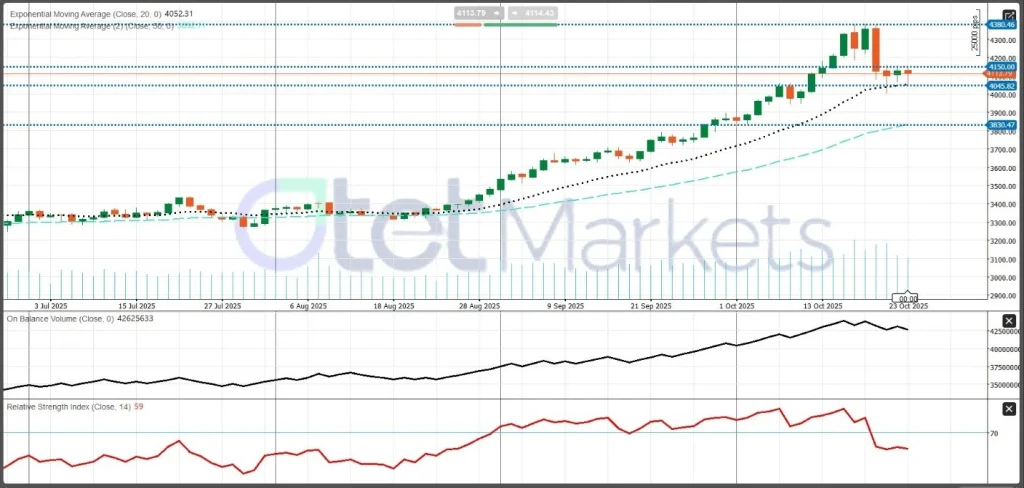
Energy Market Condition & WTI Crude Oil Weekly Outlook — October 2025
The global oil market remains fundamentally supply-heavy and demand-constrained, despite a short-term recovery in prices. While WTI crude rebounded from October’s lows, the medium-term tone stays bearish, with high production and soft consumption continuing to pressure sentiment.
Supply and Market Fundamentals
U.S. crude output and global liquids production remain elevated, with projections pointing to further growth into late 2025. The U.S. oil rig count increased to 420, and total rigs reached 550 in the week ending October 24 — evidence that producers can sustain operations despite weaker prices. OPEC+ production also remains robust, while U.S. supply continues to hover near record highs, keeping the market well-supplied.
On the demand side, global consumption growth has slowed, particularly in refined products. Refiners, once active buyers during the summer’s tight market, have become more cautious amid weaker margins. This combination of steady supply and tepid demand reinforces the surplus narrative dominating crude fundamentals.
Inventories and Outlook
The U.S. energy balance remains mixed. While inventories have seen localized draws, global agencies forecast rising oil stocks through Q4 2025 and into 2026. Consequently, official projections see Brent crude averaging in the low $60s by late 2025, with potential downside in 2026.
Baker Hughes expects upstream capital spending to decline in 2025 as oversupply concerns weigh on investment decisions.
EIA Petroleum Report — Week Ending October 18
- Crude inventories fell by 0.96M barrels (vs. +2.2M expected), signaling firmer refinery demand.
- Cushing, Oklahoma stocks dropped 0.77M barrels, extending recent draws.
- Refinery utilization rose 2.9 percentage points, boosting crude runs by 0.6M bpd.
- Gasoline stocks fell 2.15M barrels, and distillate inventories dropped 1.48M barrels, underscoring solid product demand despite higher output.
Overall, refinery activity is ramping up ahead of the winter heating season, tightening the U.S. petroleum balance even as imports rise.
WTI Technical Outlook — Daily Chart
WTI trades near $61.40/bbl, rebounding from $56.00, but remains under the 200-day EMA ($65.40) — confirming a bearish long-term structure.
- Resistance: $63.20–$64.00, then $65.50 (key trend reversal zone).
- Support: $59.50–$60.00, with a floor at $56.00 — a break below which would revive selling pressure.
Base case: Sideways-to-soft bias within $59–$64 as markets await clearer demand signals.
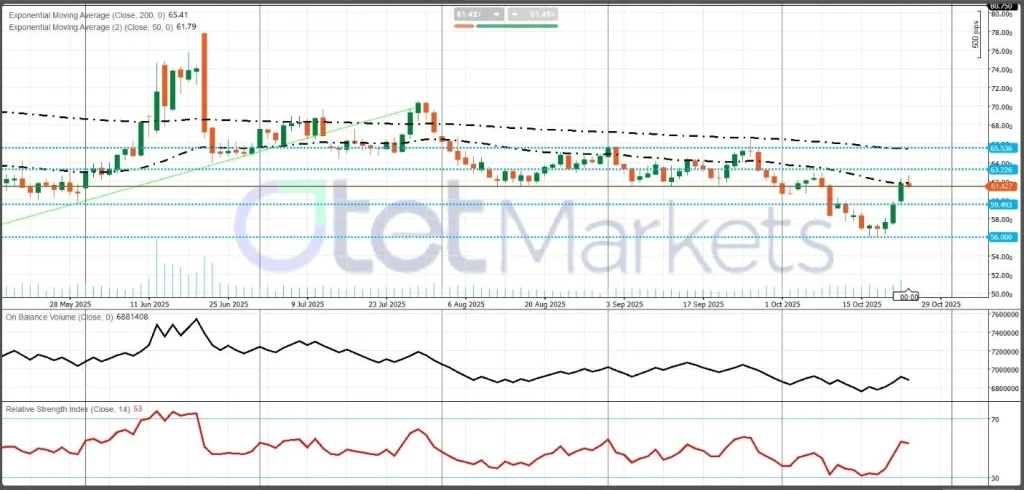
Crypto Market Condition & Bitcoin (BTC) Weekly Outlook — October 2025
The cryptocurrency market remains in a structural bull trend, though it has entered a high-volatility consolidation phase. Bitcoin (BTC) trades near $110,000–$112,000, rebounding from lows below $107,000 after a turbulent week. While still below its recent all-time high above $126,000, buyers have reemerged, stabilizing sentiment and price action.
Ethereum (ETH) and other large-cap cryptocurrencies mirrored Bitcoin’s recovery, though altcoins remain weaker after being hit harder during the recent risk-off phase. Market tone is cautious but constructive — the rally is being driven more by institutional dip-buying than retail speculation, with leverage significantly reduced following heavy liquidations earlier this month.
Key Market Drivers
- ETF Flows and Institutional Demand:
Spot Bitcoin ETFs in the U.S. returned to net inflows after a string of redemptions, adding nearly $500 million on October 21 and maintaining modest positive flows through the week. As BTC has become a flow-sensitive asset, ETF demand directly impacts price action. - Macro Environment and U.S. Dollar:
A stronger U.S. dollar and rising yields temporarily pressured crypto midweek, but expectations of Fed easing and improved U.S.–China trade sentiment revived buying into the weekend. - Liquidity and Supply Dynamics:
On-chain data show exchange liquidity near multi-year lows as long-term holders (“dolphins”) continue accumulating BTC. With fewer coins available for sale, price remains highly responsive to marginal demand shifts. - Position Reset, Not Collapse:
October’s $19B liquidation wiped excess leverage but preserved the underlying uptrend. BTC’s recovery above $110K signals structural strength post-correction.
Weekly Outlook for Bitcoin
- Base Case: Sideways-to-bullish consolidation between $110K–$115K, supported by net ETF inflows and dovish Fed expectations.
- Bullish Scenario: Break above $115K could spark momentum toward $120K–$126K, with strategists eyeing $135K as a potential extension.
- Bearish Scenario: A risk-off macro shift or stronger USD could drag BTC back toward $107K–$104K; a break below $100K would signal a deeper correction.
Technical Outlook — BTC/USD (Daily)
BTC holds above $107,000 support, with resistance at $113,500–$115,000 (confluence of 50-day EMA and prior breakdown zone). A breakout targets $118K–$126K, while support zones at $110K and $107.2K remain crucial for maintaining the bullish structure.
Bias: Medium-term bullish; short-term consolidative ahead of Fed and GDP data.
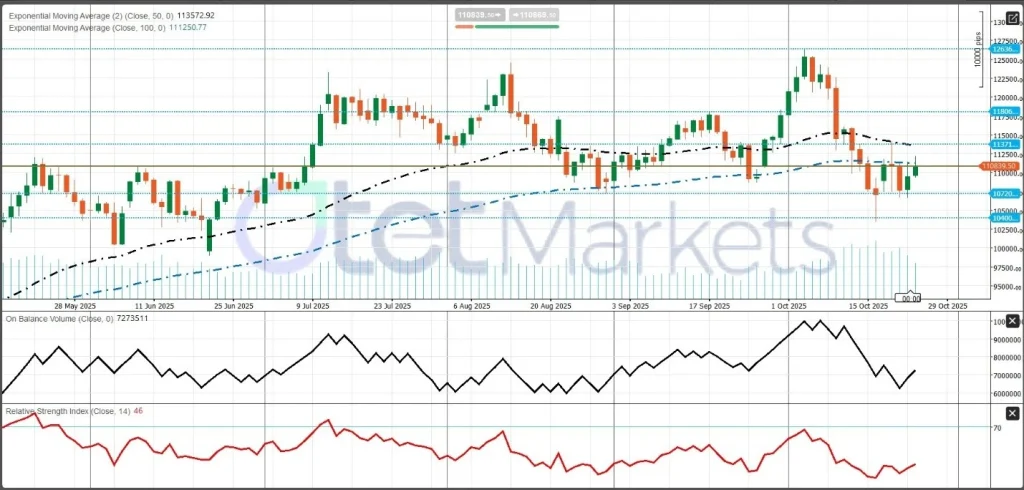
Share
Hot topics

What Is a Forex Broker and What Do They Do?
If you’ve ever browsed through financial websites or listened to others discuss currency trading, you’ve probably encountered the term forex broker, which may sound a bit technical, but the truth...
Read more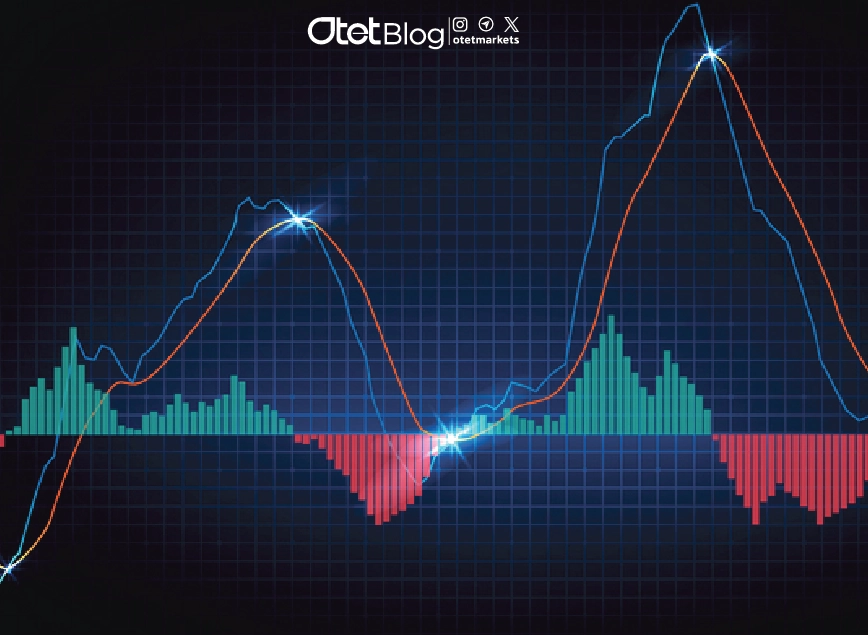
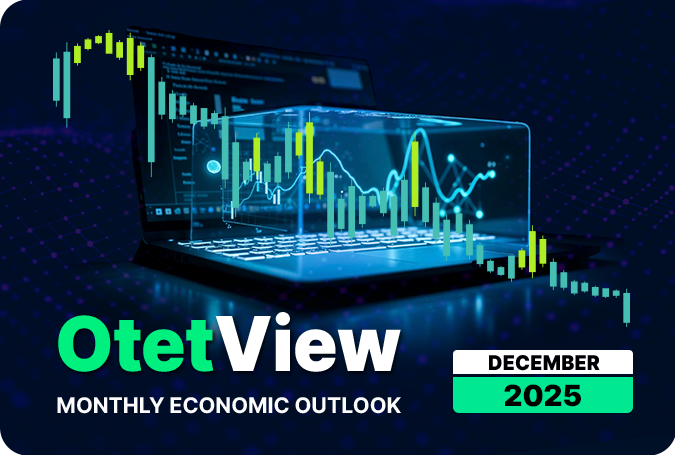

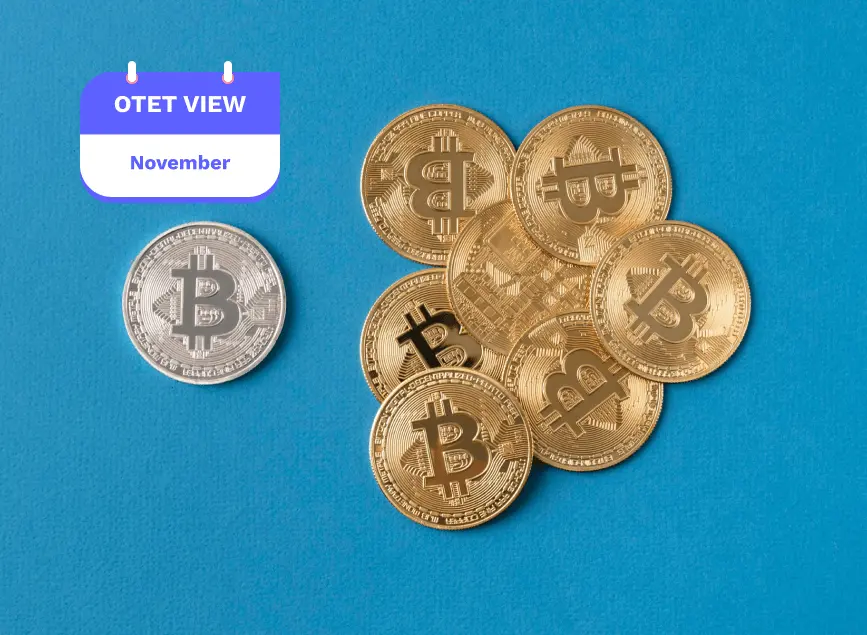
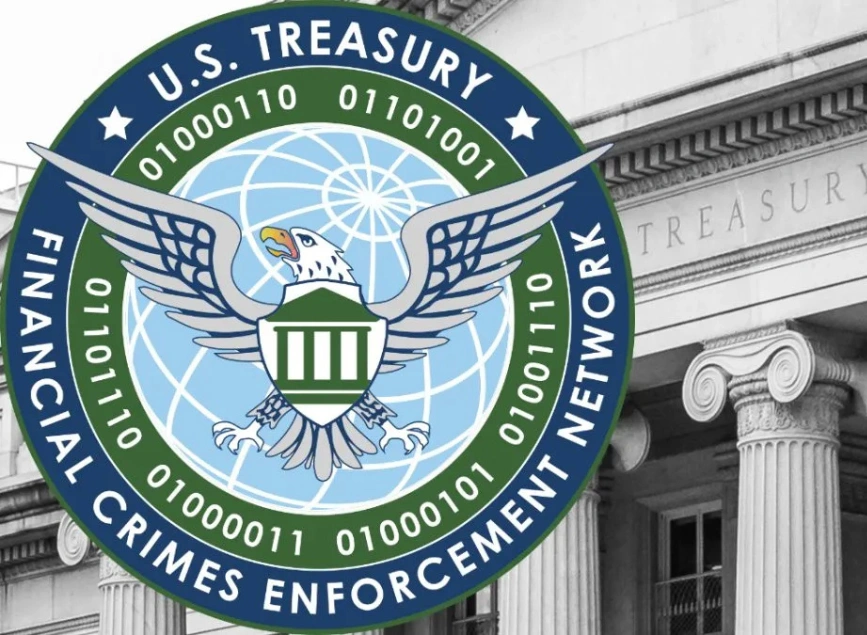
Submit comment
Your email address will not be published. Required fields are marked *